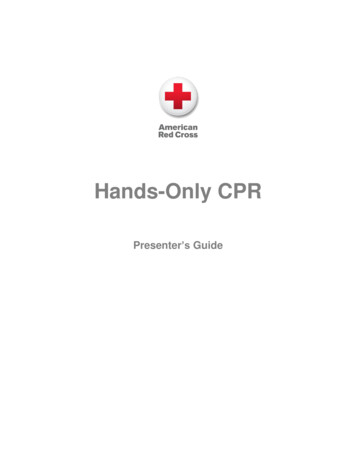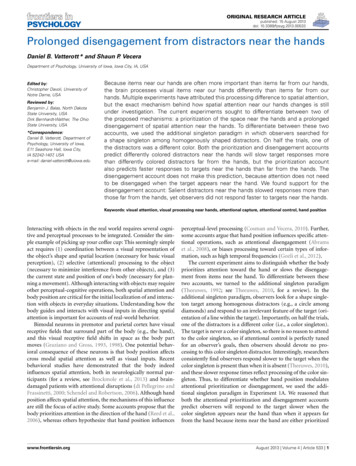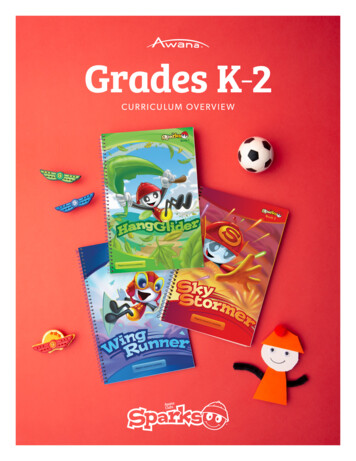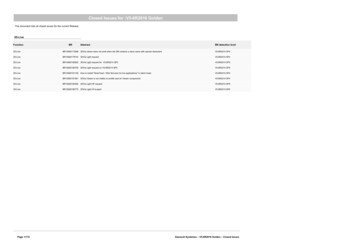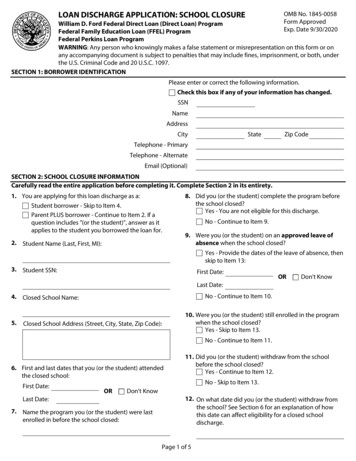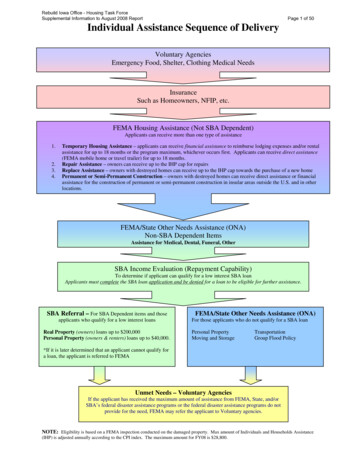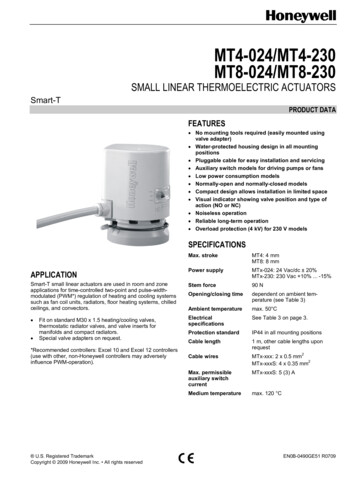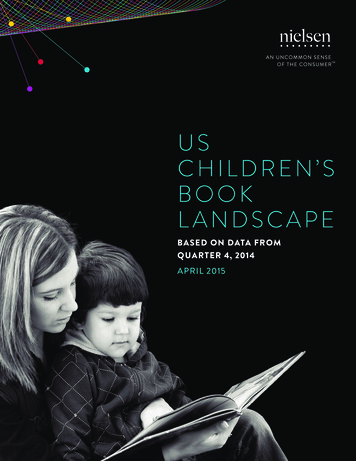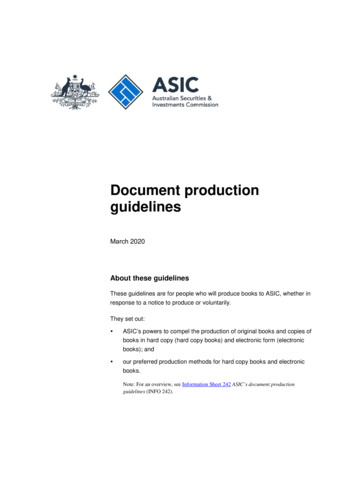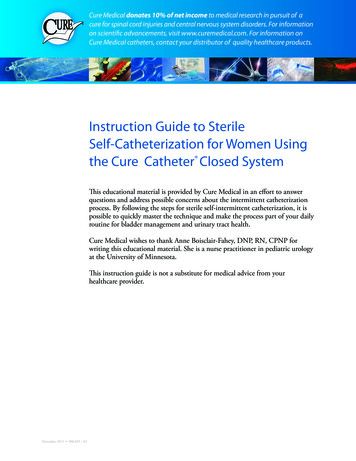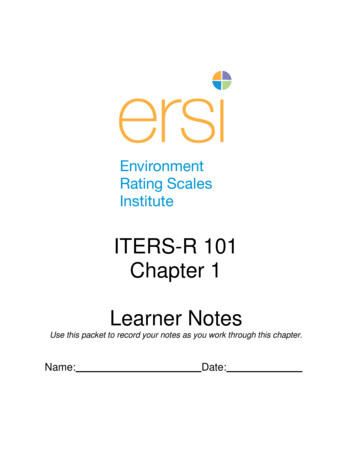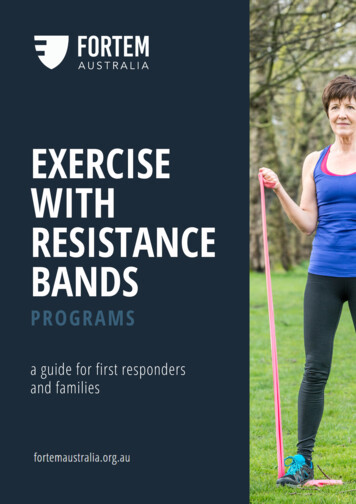
Transcription
Hands-on Books-closed: Creating Interactive Foldables in Islamic StudiesPresented By Tatiana ColosoTatiana Coloso has been in education for 9 years. She is currently teachingIslamic Studies, Kindergarten through 3rd grade at Al-Iman School inRaleigh, NC, where she has helped reinvigorate and develop the Islamiccurriculum for the past five years. Her line of research focuses onintegrating core subjects into Islamic Studies curriculum using hands on activities.Tatiana has a passion for teaching, nurturing, and stimulating young minds. This hascreated an enthusiastic environment within her classroom.AbstractDo you often find that your students seem bored or that it's hard to find funactivities that will create excitement in your classroom? Look no further! This workshopwill introduce you and your students to a world of interactive activities that willtransform any lesson. You will learn how to create Foldables that will give yourstudents the opportunity to use their creativity while gaining valuable knowledge. Youwill leave this workshop with new ideas and handouts to take back and use right away!IntroductionStudents today are growing up in a time where their minds are constantly beingstimulated. This stimulation occurs regularly through cell phones, TVs, video games,computers, tablets, and the list goes on. This constant fast paced stimulation has createda new challenge for teachers in the classroom. Teachers face the challenge of studentswhose attention spans have become increasingly short than that of a generation ago(Prensky 1). According to Marc Prensky in an article written for On the Horizon, hestates that, “Today’s students – K through college – represent the first generations togrow up with this new technology. They have spent their entire lives surrounded by andusing computers, videogames, digital music players, video cams, cell phones, and all the
other toys and tools of the digital age.” So the question remains, how do teachers engagestudents in the classroom with shorter attention spans?First and foremost teachers must evolve in order to reach their students. This isthe essence of being a teacher. Ignacia Estrada once said, “If a child can’t learn the waywe teach, maybe we should teach the way they learn.” Research has shown that studentachievement increases when an activity is introduced. According to Akley, “ engagedstudents learn more, retain more, and enjoy learning activities more than students who arenot engaged” (Akley, 3). A classroom that is actively engaged in activities will havegreater success than a classroom that is not engaged. Activities such as experiments,projects, cooperative learning, and exploration are examples of activities that engagestudent learning. Among those activities are foldables .What is a foldable ?A foldable is an interactive 3D graphic organizer (Frey, 2008). Foldable offermany benefits for students. It helps by focusing on core concepts in order to retain andretrieve information quickly. Research has proven the benefits of graphic organizers. Asmentioned earlier students today need to be stimulated and have interaction within theclassroom through activities.Graphic organizers have gone from being a simple worksheet to becoming aninteractive 3D foldable. Take for example a generic Venn diagram graphic organizer(1A) that compares the differences and similarities of two concepts; wudu andtayammum. While students are all too familiar with the classic Venn diagram, it can betransformed into an interactive foldable (1B).1AVennDiagramWuduTayammum1B
A formative assessment has gone from a typical fill-in worksheet, to a hands-onactivity that students will enjoy creating. The objective remains the same; comparing theseminaries and differences between wudu and tayammum. But the foldable has giventhe activity that added engagement that students today need. The foldable can be glued intheir journal for quick reference or be used as a tool for students to quiz each other whichoffers another important need of our students today; social interaction. The overallpurpose of an activity such as this example is that the student becomes engaged and takesownership of their learning. It allows students to have constructive conversations as theywork on their foldable and provide them with interaction with peers which is often theroot of misbehavior in the classroom and the loss of attention during lectures.It’s not easy!Introducing new activities that involves folding, cutting, or gluing can causehavoc in the classroom. But with proper training and great classroom management skillsstudents will pick it up in no time. It will become apart of the classroom culture. One wayto limit or eliminate demonstration time between the teacher and student, is by naming aspecific foldable that will be used often throughout the year. If students are trained onthat foldable there will come a time where the teacher just mentions the name andstudents get to work. Take for example the foldable below (2A). Say for example theteacher gives it the name “Vocab Fold” and trains their students how to make it, in thefuture the teacher simply announces make a “Vocab Fold” and they would know exactlywhat is expected of them. This saves valuable class time verses wasting time by teacherdemonstration. It is wise to always have a handful of foldables that will be usedthroughout the school year for various Whattypesofwatercanbeused?“TheVocabFold”
ConclusionEducation isn’t about how much information a teacher can teach and then teststudents on. As Benjamin Franklin put it, “Tell me and I forget it, teach me and Iremember it, involve me and I learn.” Students of today must be involved in the processof learning. Allowing students to explore and search for the answers and find newquestions is the essence of becoming a teacher. A great teacher doesn’t just feed theinformation to his or her students. A great teacher guides them in the exploration offinding the answers and making mistakes along the way. Foldables are one great tool inassisting students in creativity, exploration, and the search for knowledge.Foldables For BeginnersThe Vocab FoldThe vocabulary foldable is a simple and effective foldable . The purpose of thisfoldable is to enrich the understanding of essential vocabulary words.Steps:1. Fold a sheet of paper horizontally down the center.2. Fold it vertically down the center.3. At the corner where all the squares meet fold the corner until you have a triangle. Thisis the corner where the paper cannot be opened (when opened a diamond is in the centerof the page).4. Open it up and write the vocabulary word in the diamond. Then in each square haveyour students fill in important information pertaining to that word. For an example pleasesee figure 2A above.The Tab FoldTab foldables are easy and great ways for storing and retrieving information quickly.Figure 1B is a classic example of a tab fold. Tab folds are versatile for any lesson. It canbe used for vocabulary, sequencing events, etc. Depending on the information they can be3-tabs, 6-tabs, or as many as needed. Tab foldables can be printed like the one in figure
1B (sweetilm.weebly.com), made using construction paper, or by using journals. Here’show it’s made.1. Fold a sheet of any paper vertically.2. Determine how many tabs are needed and cut out each tab (only on the left folded side)until the center line is reached.3. Add information.Resources on Foldables There are tons of websites with examples of foldables . Just using the search word willrender tons of examples. Always remember that foldables are great because the contentcan be interchanged for any subject taught. Just pick the foldable that best suits youractivity and switch out the content for your own. It’s that east! http://sweetilm.weebly.com/ http://www.pinterest.com/sweetilm/foldable-ideas/ http://www.dinah.com/ http://cmase.pbworks.com/f/Foldables.pdf http://www.negaresa.org/ccgps/science/foldable graphic organizers online resources.pdf https://www.google.com Search Images -Foldables
BibliographyAkey, T. (2006, January 1). School Context, Student Attitudes and Behavior, andAcademic Achievement: An Exploratory Analysis. Retrieved September 9, 2014,from http://www.mdrc.org/sites/default/files/full 519.pdfFrey, N. (2009, April 1). Hands On” Doesn’t Mean “Minds Off”: Using Foldables toPromote Content Learning. Retrieved October 1, 2014, fromhttp://www.boostconference.org/workshop pdf/Hands On Doesn't Mean MindsOff-Foldables.pdfPrensky, M. (2001). Digital Natives, Digital Immigrants. On the Horizon, 9(5). RetrievedSeptember 25, 2014, from http://www.marcprensky.com/writing/Prensky - DigitalNatives, Digital Immigrants - Part1.pdf
A great teacher doesn't just feed the information to his or her students. A great teacher guides them in the exploration of finding the answers and making mistakes along the way. Foldables are one great tool in assisting students in creativity, exploration, and the search for knowledge. Foldables For Beginners The Vocab Fold
